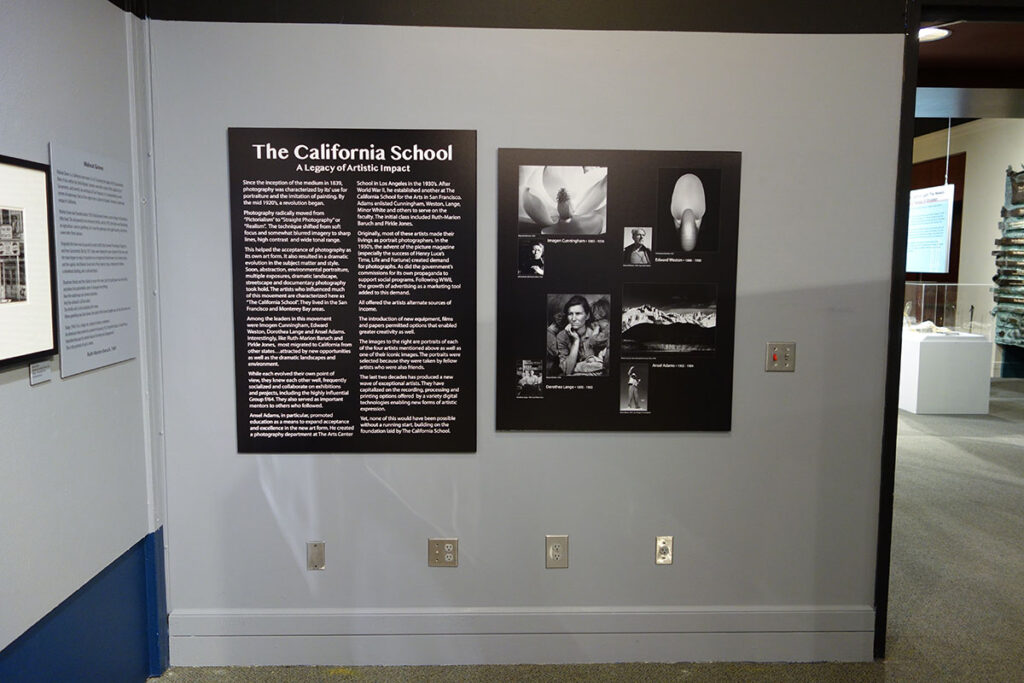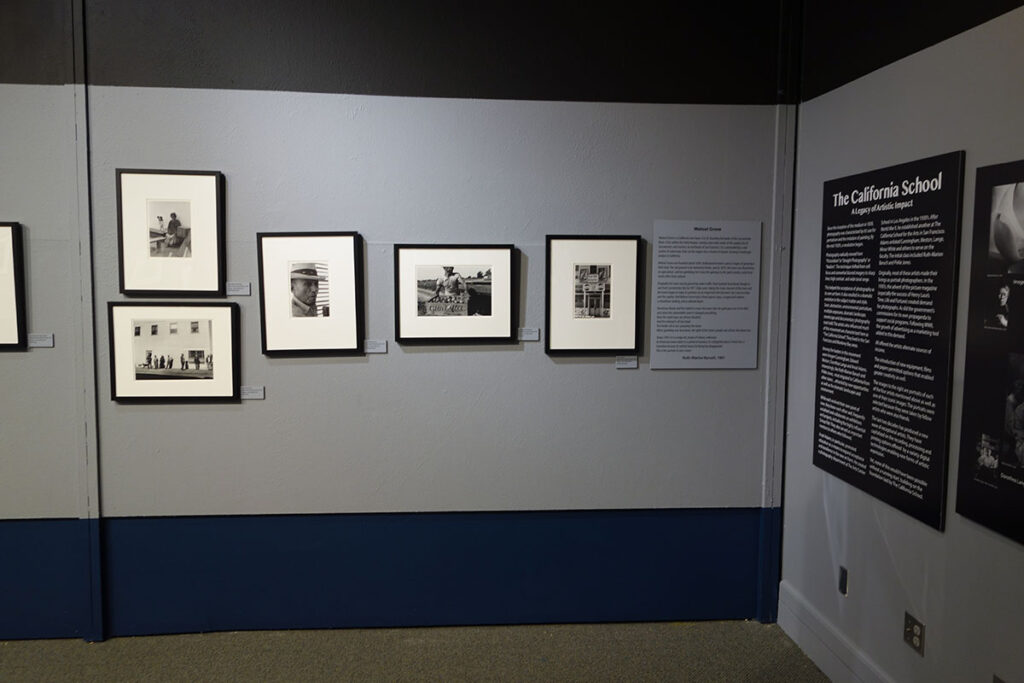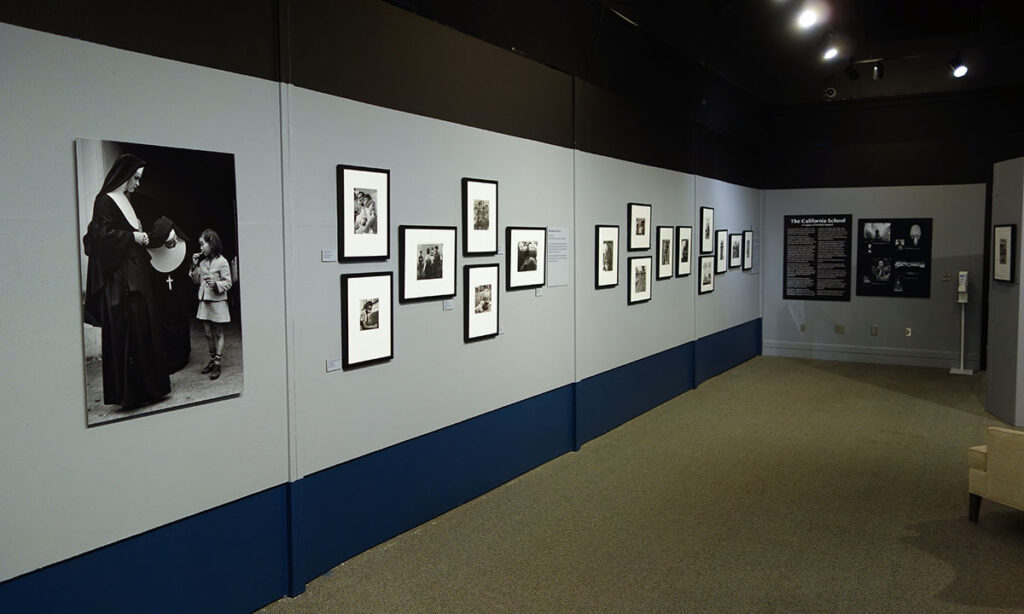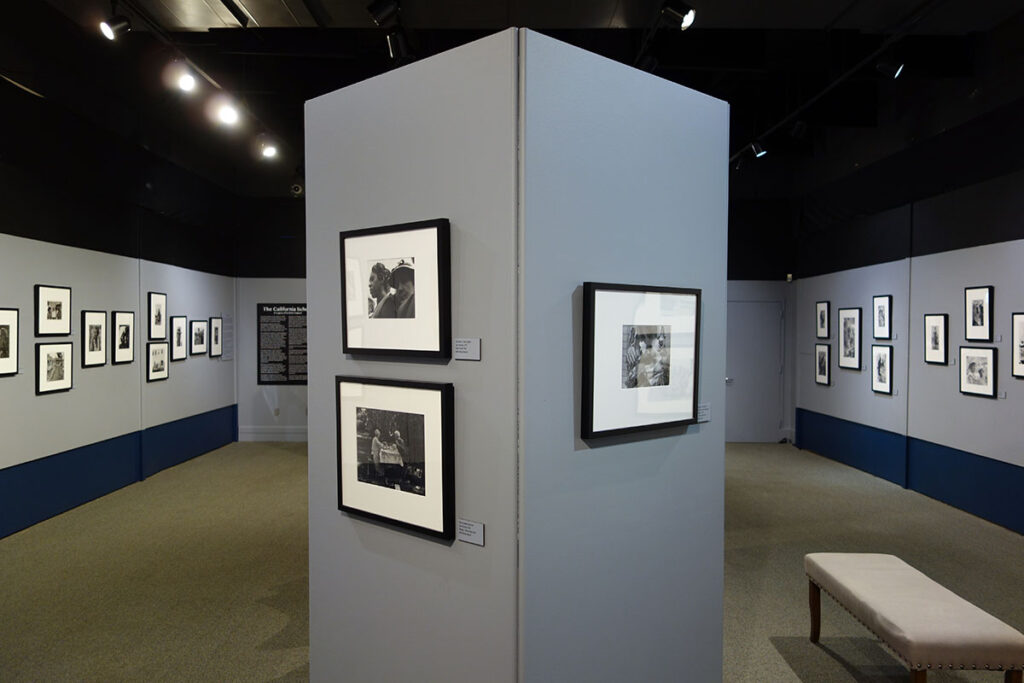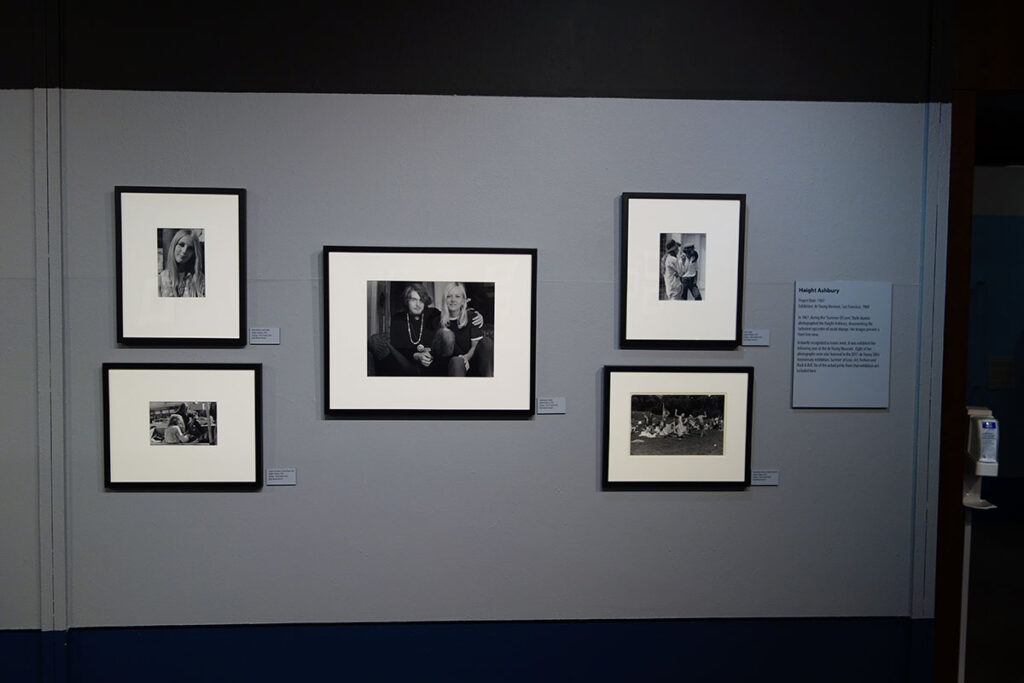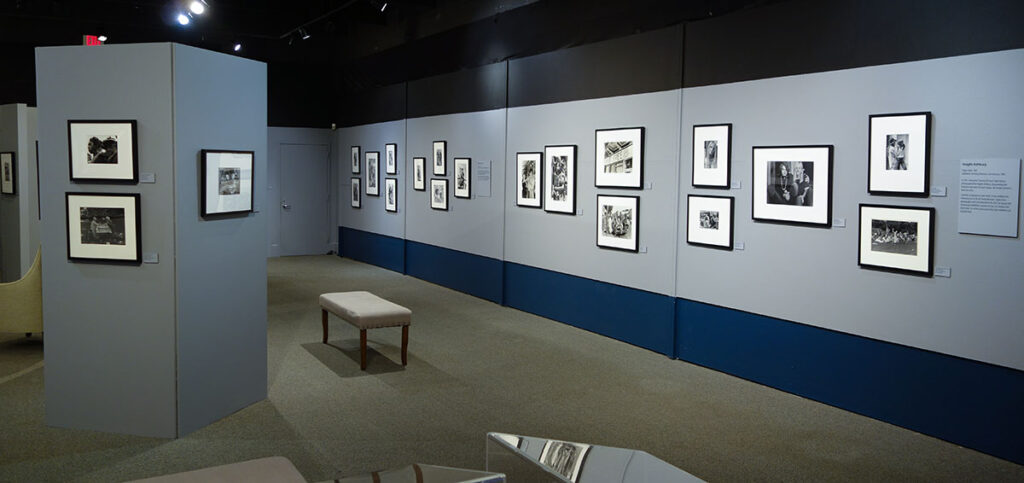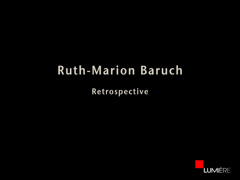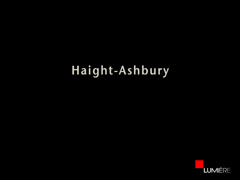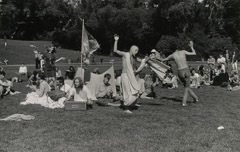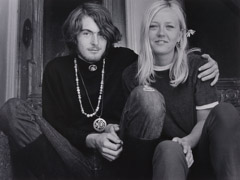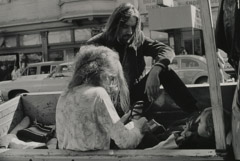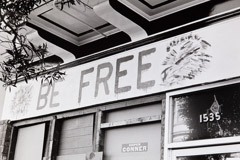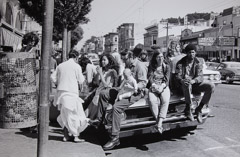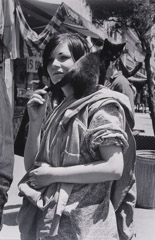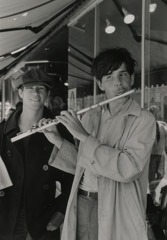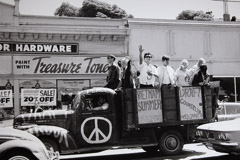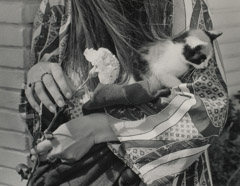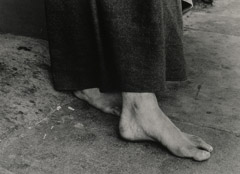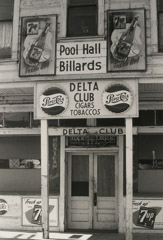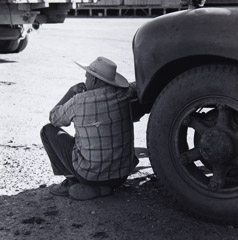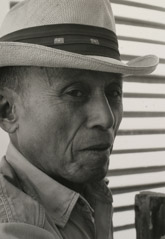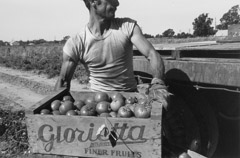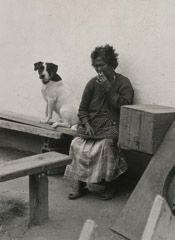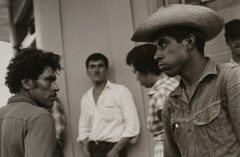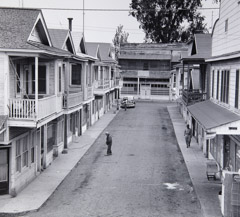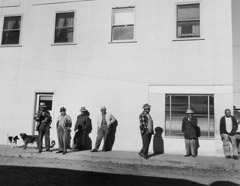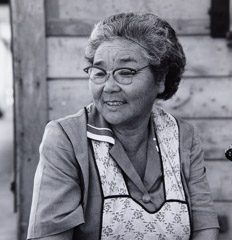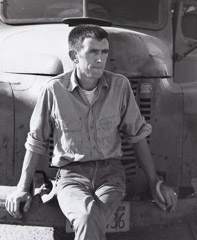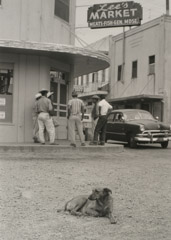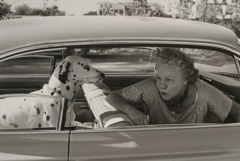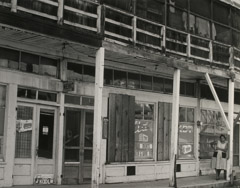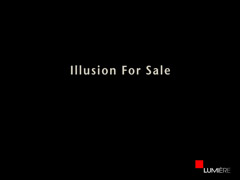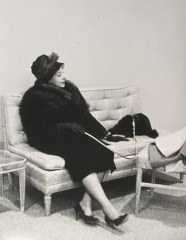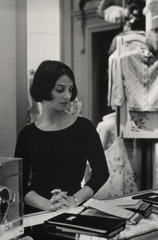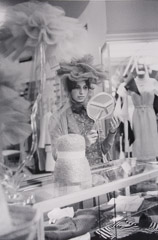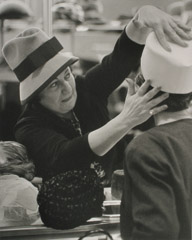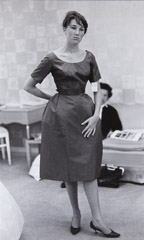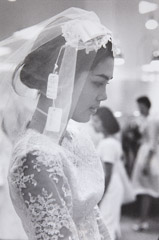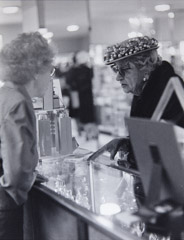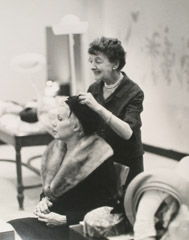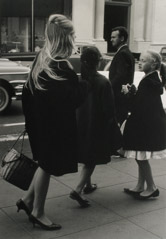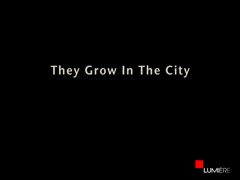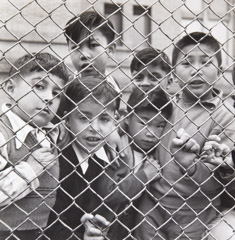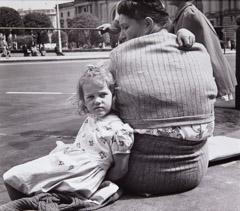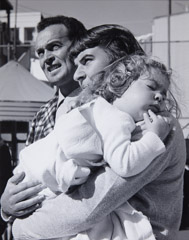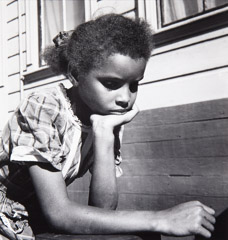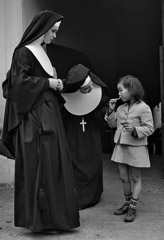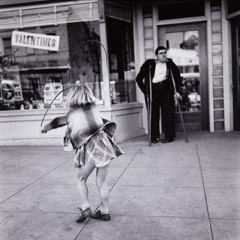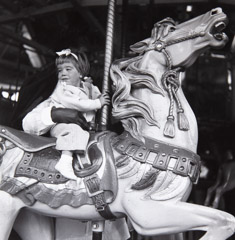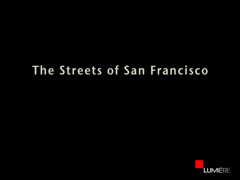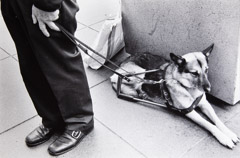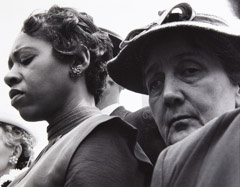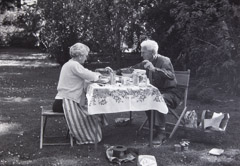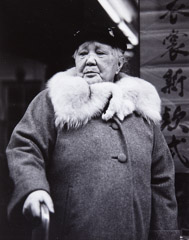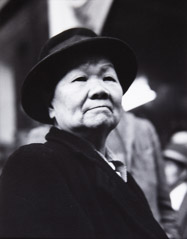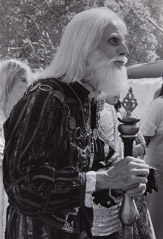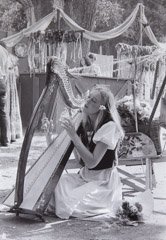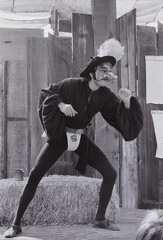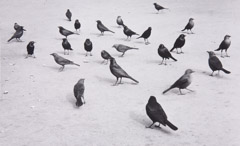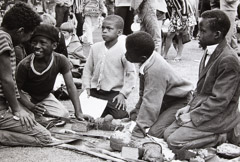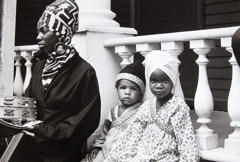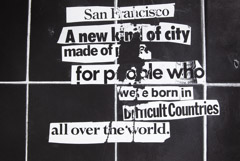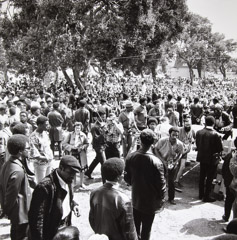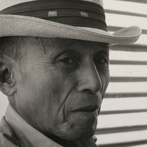Ruth-Marion Baruch Retrospective
Photography by Ruth-Marion Baruch
March 2024 – September 2024 @ the Breman Museum, Midtown Atlanta
Featured on WABE – City Lights
Exhibition curator Tony Casadonte discussed the work of Ruth-Marion Baruch with Summer Evans from City Lights. Select This Link to hear the conversation.
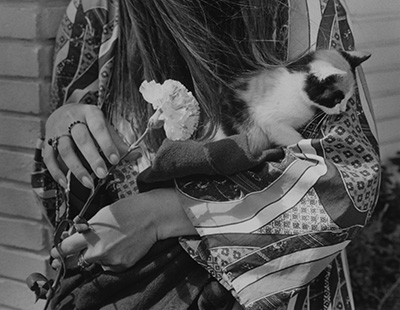
All The Symbols of the Haight, 1967
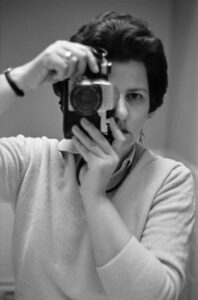
Self-Portrait, Ruth-Marion Baruch
Ruth-Marion Baruch was born in Berlin, Germany in 1922. Her mother was Alberta Zweigenhaft. Her father Dr. Max Baruch, was a neuro surgeon. A year after her birth Dr. Baruch moved his medical practice to New York City. In 1927 Ruth-Marion also emigrated with her mother. She became a US citizen in 1931. Although financially stable, her young life had many challenges. Her parents divorced not long after she arrived in New York and in 1938 her father died suddenly at the age of 54.
Ruth-Marion was an accomplished student, avid reader and excelled at writing and creative endeavors. At 14, she produced a play at her synagogue, Temple Emanu-El, entitled Middle Ages Returning. Baruch received two undergraduate degrees from the University of Missouri in 1944. One in Creative Writing and Literary Criticism, the other in Journalism. She then attended Ohio University where she became the first woman in the country to receive a Masters of Fine Arts in photography. Her thesis was titled, Edward Weston: The Man, The Artist and the Photographer. Baruch spent a number of weeks with Weston at his home, Wildcat Hill, in Carmel CA. In 1946, she moved to California to continue her post graduate study of photography at the California School of Fine Arts. Baruch was in the inaugural class. The program included instructors that were icons in the emerging field of photography; Edward Weston, Ansel Adams, Minor White, Dorothea Lange, Imogen Cunningham, Morley Baer and Homer Page. It was there she met fellow student and future husband Pirkle Jones.
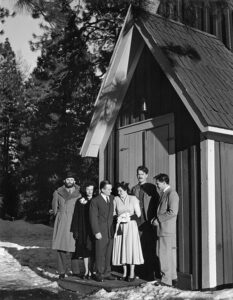
Wedding Party, Chapel Yosemite Valley
Many of Baruch’s photographic projects were self-directed. Her life experiences and empathetic nature were driving forces in her subject selection and point of view. Two featured in the exhibition were collaborations with her husband: in 1948, They Grow in The City and the 1961 project, Walnut Grove: Portrait of a Town. Other projects include: Illusion for Sale, photographing unaware shoppers in Union Square, seeking happiness through consumerism and Haight-Ashbury 1967, street photography during the “Summer of Love”.
Ruth-Marion benefited from her association with the early artists in The California School…her contact with Edward Weston and Ansel Adams when writing her master’s thesis; …then, at The California School of Fine Arts.
The strong relationships included personal as well as professional aspects of their lives. When a rabbi refused to marry Baruch and Jones, Ansel Adams
suggested and arranged a wedding in Yosemite Valley.
Even after graduation she engaged with faculty members such as Dorothea Lange who continued to mentor her. After completing the Illusion for Sale project she asked Lange for a critical review. Carefully reviewing each photographic print, Lange simply said, “I consider it photographed.”
This relationship with Lange carried over to Pirkle Jones as well. In 1956, she asked Jones to join her on a project for a major Life Magazine story. It was to document the destruction of a beautiful Northern California valley that was to be flooded to create a reservoir. The resulting series is a compelling narrative about the loss of land that had been home to generations of Berryessa Valley ranchers and their families. Shown at SF MoMA at the time, it is now on view at The Booth Western Art Museum in Cartersville, just 45 minute drive north of Atlanta.
Baruch’s archive, along with her husband’s, is housed at the Special Collections Library and Archive, University of California, Santa Cruz. Her work has been widely exhibited, including at the de Young Museum in San Francisco, The Museum of Modern Art, New York, The Los Angeles County Museum, The Amon Carter Museum in Texas and San Francisco Museum of Modern Art. It is held in numerous private and public collections.
.
The California School
A Legacy of Artistic Impact
Since the inception of the medium in 1839, photography was characterized by its’ use for portraiture and the imitation of painting. By the mid 1920’s, a revolution began.

Magnolia Blossom, 1925
Photography radically moved from “Pictorialism” to “Straight Photography” or “Realism”. The technique shifted from soft focus and somewhat blurred imagery to sharp lines, high contrast and wide tonal range.
This helped the acceptance of photography as its own art form. It also resulted in a dramatic evolution in the subject matter and style. Soon, abstraction, environmental portraiture, multiple exposures, dramatic landscape, streetscape and documentary photography took hold. The artists who influenced much of this movement are characterized here as “The California School”. They lived in the San Francisco and Monterey Bay areas.
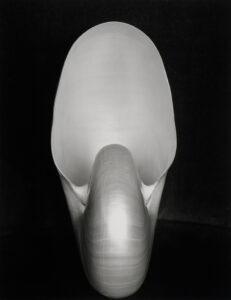
Nautilus Shell, 1927
Among the leaders in this movement were Imogen Cunningham, Edward Weston, Dorothea Lange and Ansel Adams. Interestingly, like Ruth-Marion Baruch and Pirkle Jones, most migrated to California from other states…attracted by new opportunities as well as the dramatic landscapes and environment.
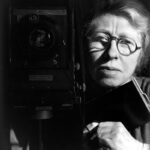
Imogen Cunningham
While each evolved their own point of view, they knew each other well, frequently socialized and collaborate on exhibitions and projects, including the highly influential Group f/64. They also served as important mentors to others who followed.
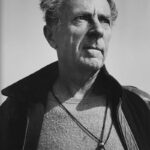
Edward Weston
Ansel Adams, in particular, promoted education as a means to expand acceptance and excellence in the new art form. He created a photography department at The Arts Center School in Los Angeles in the 1930’s. After World War II, he established another at The California School for the Arts in San Francisco. Adams enlisted Cunningham, Weston, Lange, Minor White and others to serve on the faculty. The initial class included Ruth-Marion Baruch and Pirkle Jones.

Winter Sunrise, Lone Pine, 1944
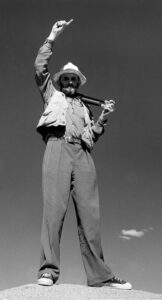
Ansel Adams
Originally, most of these artists made their livings as portrait photographers. In the 1930’s, the advent of the picture magazine (especially the success of Henry Luce’s Time, Life and Fortune) created demand for photographs. As did the government’s commissions for its own propaganda to support social programs. Following WWII, the growth of advertising as a marketing tool added to this demand.
All offered the artists alternate sources of income.
The introduction of new equipment, films and papers permitted options that enabled greater creativity as well.
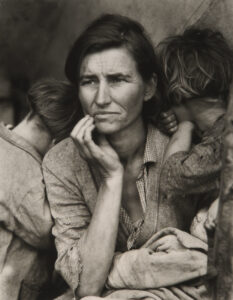
Migrant Mother, 1936
The images through out this post are portraits of each of the four artists mentioned above as well as one of their iconic images. The portraits were selected because they were taken by fellow artists who were also friends.
The last two decades has produced a new wave of exceptional artists. They have capitalized on the recording, processing and printing options offered by a variety digital technologies enabling new forms of artistic expression.
Yet, none of this would have been possible without a running start, building on the foundation laid by The California School.
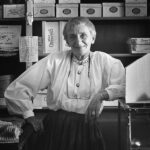
Dorothea Lange
Featured in this exhibition is the work of Ruth-Marion Baruch.
Select the image below to view her complete artist pages.
Ruth-Marion Baruch in Context:
A Curators Perspective
Julian Cox @ The Breman
Julian Cox, Deputy Director and Chief Curator, the Art Gallery of Ontario discussed Ruth-Marion Baruch and her unique place in photo history and curating her work into the 2017 exhibition: The Summer of Love Experience: Art, Fashion, and Rock & Roll. Cox also discussed his recent exhibition, Leonard Cohen: Everybody Knows, which originated at the Art Gallery of Ontario and is now scheduled for multiple sites in Europe.
This event was in collaboration with The Breman, which is currently exhibiting Ruth-Marion Baruch – Retrospective, until September 1, 2024.

Julian Cox
Julian Cox has been at the Art Gallery of Ontario in Toronto, Canada, since 2018. Previously he was the founding curator of photography and chief curator at the Fine Arts Museums of San Francisco, 2010-2017. Prior to that Cox was curator of photography at the High Museum of Art in Atlanta, 2005-2010.
Cox is co-author of the critically acclaimed publication: Julia Margaret Cameron: The Complete Photographs (2003), the first catalogue raisonné produced on the work of a photographer. He is the author of many scholarly articles and books. His most recent publications are:- KAWS: FAMILY (2023); Leonard Cohen: Everybody Knows (2022) and Matthew Wong: Blue View (2021). Some of his titles dedicated to photography include: Harry Callahan: Eleanor (2007); Road to Freedom: Photographs of the Civil Rights Movement, 1956-1968 (2008); and Danny Lyon: Message to the Future (2016).
Visions of Society:
The Photographic Insight of Ruth-Marion Baruch

Self-Portrait, Ruth-Marion Baruch
June 9th: 2PM @ The Breman
An enlightening panel discussion on Ruth-Marion Baruch’s influential work and her role in the California School of Photography. This event, chaired by Bob Yellowlees and featuring Jennifer McFarland and Teresa Mora, was held at The Breman. Jennifer McFarland presented a personal look into Ruth-Marion’s life and her poetic expressions, drawing from Baruch’s archived collections. Teresa Mora, from her vast experience at UC Santa Cruz, discussed the significant bodies of work featured in the exhibition. The session will transition into a moderated discussion, emphasizing the themes presented, and conclude with an audience Q&A.
Ruth-Marion Baruch was a visionary photographer known for her poignant and deeply empathetic portrayals of various communities in San Francisco during the 1960s. Her works, were on display at The Breman, alongside her husband Pirkle Jones, capturing the essence of social movements and everyday life, making her a pivotal figure in the California School of photography.
Jennifer McFarland met Ruth-Marion and Pirkle Jones in the early ’70s, and their friendship spanned nearly four decades. Jennifer, having previously worked in heavy industrial construction, later dedicated thirteen years to archiving Jones and Baruch’s collections, contributing significantly to the preservation and understanding of their works.
Teresa Mora, Head of Special Collections & Archives at UC Santa Cruz, manages the Ruth-Marion Baruch and Pirkle Jones archive. Her commitment to making these collections accessible reflects her broader dedication to archival preservation and education.
The exhibition was an opportunity to explore the legacy of Ruth-Marion Baruch and her contributions to the California School of Photography.
Ruth-Marion Baruch & Pirkle Jones, excerpt from the film: Pirkle Jones Seven Decades Photographed, by Jane Levy Reed
Pirkle Jones describes his wedding to Ruth-Marion Baruch in Yosemite Valley.
Excerpt from the film: Pirkle Jones Seven Decades Photographed, by Jane Levy Reed
Ruth-Marion Baruch & Pirkle Jones describe their collaboration on the Walnut Grove Project.
Excerpt from the film: Pirkle Jones Seven Decades Photographed, by Jane Levy Reed

